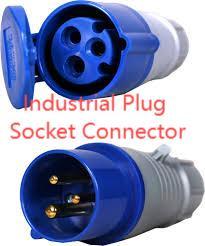In every high-demand worksite, ensuring consistent electrical performance begins with the Industrial Plug Socket Connector , a core element that balances safety, efficiency, and compatibility. The Industrial Plug Socket Connector allows secure power transfer in environments where rugged reliability is critical, such as construction sites, manufacturing floors, and outdoor operations. When integrated into system planning, it protects circuits from overload, moisture, and vibration while streamlining installation and maintenance.
1. The Foundation of Safe Industrial Power
At the heart of every electrical setup lies the connection — the point where current flows between equipment and supply. The performance of this junction determines not just operational reliability but also user safety. Industrial-grade connectors are designed to endure high mechanical stress, resist dust and water penetration, and prevent accidental disconnections.
Properly engineered enclosures and locking mechanisms ensure that connections remain stable, even in environments where heavy vibration, movement, or exposure to debris is unavoidable. This attention to detail translates to fewer interruptions, longer equipment life, and improved workplace safety standards.
2. Durability and Design Innovation
The design of industrial connectors has evolved to meet increasingly stringent safety and sustainability standards. Key improvements include enhanced insulation materials, impact-resistant housings, and corrosion-resistant contacts. These advances extend the service life of the connector while reducing energy loss and contact wear.
Modern connectors are often color-coded and keyed to prevent mismatching, ensuring accurate phase alignment during installation. Modular construction allows components to be replaced or upgraded without full system downtime. This flexibility not only reduces waste but also simplifies maintenance for technicians managing multiple equipment types.
3. Efficiency and Compatibility in Modern Systems
In industrial environments, compatibility across voltage ranges and system standards is crucial. Well-designed connectors streamline the setup of multi-device systems and simplify energy distribution planning. They can also integrate seamlessly into automated systems, improving power management efficiency.
Advanced versions may include built-in safety shutters, grounding enhancements, or quick-release features that enable fast, tool-free operation. By reducing setup time, they help teams optimize workflows and reduce operational costs while maintaining safety compliance. Efficient connection systems minimize unplanned outages and enhance overall energy reliability.
4. Nante’s Role in Industrial Power Connectivity
Within the competitive industrial equipment landscape, Nante has consistently focused on refining connector reliability, adaptability, and environmental resistance. Through testing, design feedback, and collaboration with contractors and engineers, the company continues to optimize performance for diverse industrial settings.
Nante’s engineering philosophy centers on longevity — designing connectors that are resistant to moisture ingress, mechanical wear, and temperature extremes. The goal is not just to supply a product but to deliver a sustainable component that fits seamlessly into future energy infrastructure. By emphasizing modularity and compliance, Nante supports customers seeking durable, standardized power solutions for expanding operations.
5. Future Trends and Practical Selection Guidance
The future of industrial connectivity is moving toward smart integration — connectors capable of transmitting both power and data for predictive maintenance and monitoring. These intelligent interfaces enable equipment to self-report conditions like overheating or contact wear before a failure occurs.
When selecting a connector, engineers should assess environmental exposure, load requirements, and maintenance accessibility. Prioritize durability and interoperability with existing systems to ensure smooth upgrades later. Organizations that adopt forward-compatible designs reduce lifecycle costs and environmental waste.
Reliable power systems begin at the connection point. By choosing properly rated, field-tested components, industries safeguard their productivity and reduce downtime. To explore more details and application options, visit www.nante.com/product/ .
